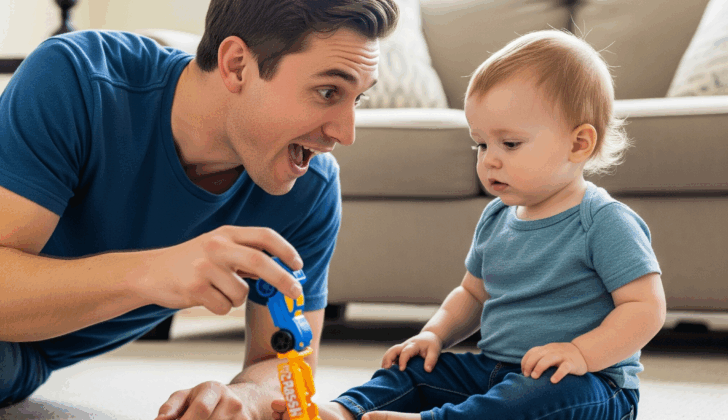Shhh! A Parent’s Guide to Mastering the ‘Quiet Sound’ at Home
As a pediatric Speech-Language Pathologist, one of the most common questions I hear from parents is:
“Why does my child say ‘sip’ instead of ‘ship’?”
If you’ve noticed your child saying “wass” for “wash” or “toe” for “show,” you’re not alone. Substitutions for the /sh/ sound—affectionately known as the “quiet sound”—are a very normal part of speech development.
The great news? You, the parent or caregiver, are your child’s best and most powerful speech helper. And no, it doesn’t require flashcards or frustrating drills. With just a few playful and natural strategies woven into your day, you can help your child move closer to clear, confident communication.
What Is the /sh/ Sound?
We call it the quiet sound because it mimics the soft “shhhh” we use when asking for silence. To make it:
-
The lips pucker slightly forward (think “fishy lips”).
-
The tongue lifts toward the roof of the mouth, allowing air to flow over it.
-
The sound is continuous and voiceless—no vocal cord vibration needed.
Most children master this sound around 4.5 to 5 years old. It’s common for younger kids to substitute /sh/ with /s/ (“seep” for “sheep”) or /t/ (“toe” for “show”) as part of typical development. So, if your 3-year-old isn’t producing it perfectly, rest easy—they’re likely on track.
The Golden Rule: Connect, Don’t Correct
Before we dive into techniques, let’s highlight the #1 principle for supporting speech at home:
Connection > Correction
Instead of saying “No, say it like this,” simply model the correct version of the word in a loving, natural way.
Real-Life Example:
Child says: “Look at that big sip!”
You respond: “Wow, you’re right—that ship is huge! That ship is moving so fast!”
You didn’t correct them. You simply provided a clear, confident model. This strategy—called auditory modeling—gives the brain the repetition it needs to learn, without pressure or frustration.
Playful Ways to Teach the ‘/sh/ Sound’
Before a child can say /sh/ in words, they often need to feel confident producing the sound on its own. Here are fun, low-pressure ways to build that foundation:
The Quiet Game
Put your finger to your lips and say, “Shhhh.” Pretend you’re in a library or near a sleeping baby. Invite your child to copy you. Turn it into a game of “Who can be the quietest?”
The Crashing Wave
Make a gentle wave motion with your hand while saying “shhhhhhh,” like ocean waves rolling in. Say, “Let’s make wave sounds together!” It’s calming and fun.
Mirror Time
Grab a small mirror and say the /sh/ sound together. Talk about what your lips are doing:
“Look at my fishy lips—they’re round. Now you try! Shhh.”
Weaving the /sh/ Sound Into Your Daily Routine
Children learn best through repetition in real-life moments, not drills. Think quality over quantity—a few words said meaningfully and often are more powerful than a long list once a week.
1. Bathtime: A /sh/ Sound Goldmine
Target Words: wash, shampoo, fish, ship, splash
Script Idea:
“Let’s wash your hair! Here’s the shampoo—squish! Now we wash it all out. Look at your toy fish! Oh no, don’t splash too much!”
2. Getting Dressed
Target Words: shirt, shorts, shoes, push
Script Idea:
“Let’s find your shirt. Are those your favorite shorts? Time to put on your shoes. Can you push your foot in?”
3. Playtime
Target Words: push, crash, shape, shadow, cash register
Script Idea:
“Ready to push the car? Go! Crash! Look at your shadow. What shape is it? Let’s play with the cash register.”
Functional Word Lists: Just a Few at a Time
Use these lists as a guide for modeling during natural moments—not for testing or drilling. Stick to just 2–3 words your child hears regularly.
/sh/ at the Beginning of Words
-
Shoe
-
Shirt
-
Shake
-
Share
-
Shampoo
-
Ship
-
Shadow
-
Shape
-
Shovel
/sh/ at the End of Words
-
Wash
-
Push
-
Fish
-
Dish
-
Crash
-
Finish
-
Brush
-
Trash
Tip: If your child loves handwashing, repeat “wash” naturally 5–10 times during the routine. That’s more effective than repeating a list of unrelated words.
You’re the Model—Not the Critic
Your child is always listening—and learning from you. By staying playful, patient, and consistent in your modeling, you’re laying the groundwork for speech success.
And if your child is nearing age 5 and still struggles with /sh/, or if their speech is hard for others to understand, don’t hesitate to consult a certified Speech-Language Pathologist for personalized support.
Keep Learning & Stay Connected
Follow First Words Bright Futures on Facebook and Instagram for:
-
Daily speech tips
-
Fun activity ideas
-
Q&A with a pediatric SLP
Watch a Video Example of the /sh/ sound in action.
Want more SLP articles ? Visit:
- MDS: Bouncing into the /B/ Sound: Fun Home Strategies for Boosting Your Child’s Speech
- MDS: Hiss Happens: A Parent’s Guide to Helping Your Child Master the /s/ Sound
Disclaimer: This article offers general educational information. It is not a substitute for professional evaluation or treatment. Please consult a licensed Speech-Language Pathologist for personalized concerns regarding your child’s speech development.












